Hello everyone,
Sofirn kindly sent me a free sample of their brand new product SF47T in return for an honest and unbiased review. Thanks a lot for the nice opportunity.
Disclaimer: I did not receive any kind of compensation except for the light in return for this review.

For those of you who like to read the German version, I have also published my review on TLF.
https://www.taschenlampen-forum.de/threads/review-sofirn-sf47t.80580
Please also have a look at Jacob's ("Funtastic") informative and interesting video review of the SF47T. I share a lot of his conclusion about this flashlight.
What's special about Sofirn's SF47T?
Launching the SF47T ("T" for thrower), Sofirn finally made a successful step up to Osram LEDs. As a result, we get to see an interesting and sleek midsize thrower flashlight for searching, hunting and many more applications. It is the right tool if you need beam distances up to 1,100m ANSI, i.e. 300m to 400m actually visual range. Prominent features of the SF47T are the 7A constant current buckdriver, the 21700 format, the utilization of Osram's latest KW CULPM1.TG ("Boost HX") emitter as well as a significantly improved thermal regulation (ATR) - more about this later on. Like many similar tactical thrower flashlights with dual switch layout (mechanical tailclicky and electronic side switch), the SF47T comes with a classic user interface providing two mode groups for individual needs.
Some specifications:
- Dimensions: 247.5mm (length) x 55mm (head diameter)
- Weight: 315g w/o batteries
- Emitter: Osram KW CULPM1.TG ("Boost HX"), 6500K CCT
- Max. output: 1,500 Lumen (manufacturer's rating)
- Max. runtime: 41 days (Moonlight mode)
- Peak distance: 1,100m (manufacturer's rating)
- Peak intensity: 303.750cd (manufacturer's rating)
- Driver: 7A 2S constant current buckdriver
- Battery: 2x 21700 lithium-ion battery in serial connection (8.4V)
- Water resistance: IPX-8 up to 2m
- Impact resistance: 1m
- User Interface: tactical dual switch UI with stepped modes (Moon, Low, Medium, High and Turbo as well as Strobe/SOS/Beacon)
- Mode Memory: Yes (standard modes Low, Medium und High only)
- Low voltage protection
- Reverse polarity protection
- Thermal regulation "ATR"
Where to buy? (no affiliate-links):
>>> Amazon US <<<
>>> Amazon DE <<<
>>> Sofirnlight.com <<<
>>> AliExpress <<<
Please note that Sofirn frequently promotes discounts and coupons on BLF, so I recommend checking for these before you hit the purchase button. ;-)
Unboxing
Remarkably, Sofirn updated their cardboard box design. It now features the Sofirn logo and slogan as well as two QR codes to quickly access their websites on AliExpress, Alibaba and Sofirnlight. I like the fact that their packaging is more or less environmentally-friendly without any plastic blister that painfully cuts into one's hands.

If you purchase the kit-version you get apart from the light: a simple 2-bay charger (5A 2A input, 1A output each), a microUSB cable, a lanyard, the multi-language manual and two unprotected 21700 5000mAh batteries with Sofirn branding.

SF47T follows the typical shape and concept of other tactical dual switch flashlights, e.g. SP70, Jetbeam BC40 Pro, Nitecore MT42, Klarus XT32, Acebeam T21 or Fenix TK47. Sofirn however uses the new advanced 21700 format which benefits from more capacity/runtime but also from a better tactile handling, a better ratio between head and tube as well as a better weight balance in one's hand.
Looking at the head we see a slightly crenelated bezel for tactical purposes. Sofirn refrained from using stainless steel here. On the plus side it will not distort the beam by unwanted artifacts. There's a deep SMO reflector with Osram's latest "Boost HX" emitter in the center. This new generation emitter is a bit advanced over its predecessor "White Flat 2" (KW CSLPM1.TG) as it uses a 4040 footprint, enabling easier focusing and better thermal properties at high currents. Talking about focusing, Sofirn did quite a good job here but still there's some room left for slightly better centering in order to get optimum peak intensity. On a white wall I see some little blurring of those four overlapping ovals around the hotspot. Outside however you will not notice any of this.

The flashlight can easily be dismantled into three parts: head, tube and tailcap. Threads are well-made and run smooth but came dry as a desert from factory. I fixed this with some lubrication right away. The tube features a knurling that does not cover its full length. Thus, secure tactile handling is given on the rear end, only. This is a bit odd as it takes one's hand to grab the anterior end of the tube to operate the side switch. Maybe Sofirn can improve this minor imperfection with the next revision. The tube can only be used in one direction as both ends feature different threads/wall diameters. Protected button top 21700 batteries cannot be used as the maximum length for both batteries must be 145mm or less. As a matter of fact, there's quite some spring tension already when using two flat top batteries. More about this later.

Having a brief look at the driver, I noticed that Sofirn did not use their traditional linear / FET drivers but a more efficient 7 amps buckdriver with constant current regulation and improved thermal regulation. A very wise choice in my humble opinion, as you may see on the runtime analysis later. The flashlight's head features a rather large spring whereas the tailcap comes with dual springs for better current flow.

A closer look at the head reveals that Sofirn invested a lot of efforts here. The protruding side switch is more easily to find in darkness and has an improved pressure point. It still feels a bit too soft to my mind but it is much better than those from previous generations. All heat fins are perfectly deburred and feel smooth. The anodising is one of the best I have ever seen in Sofirn flashlights.
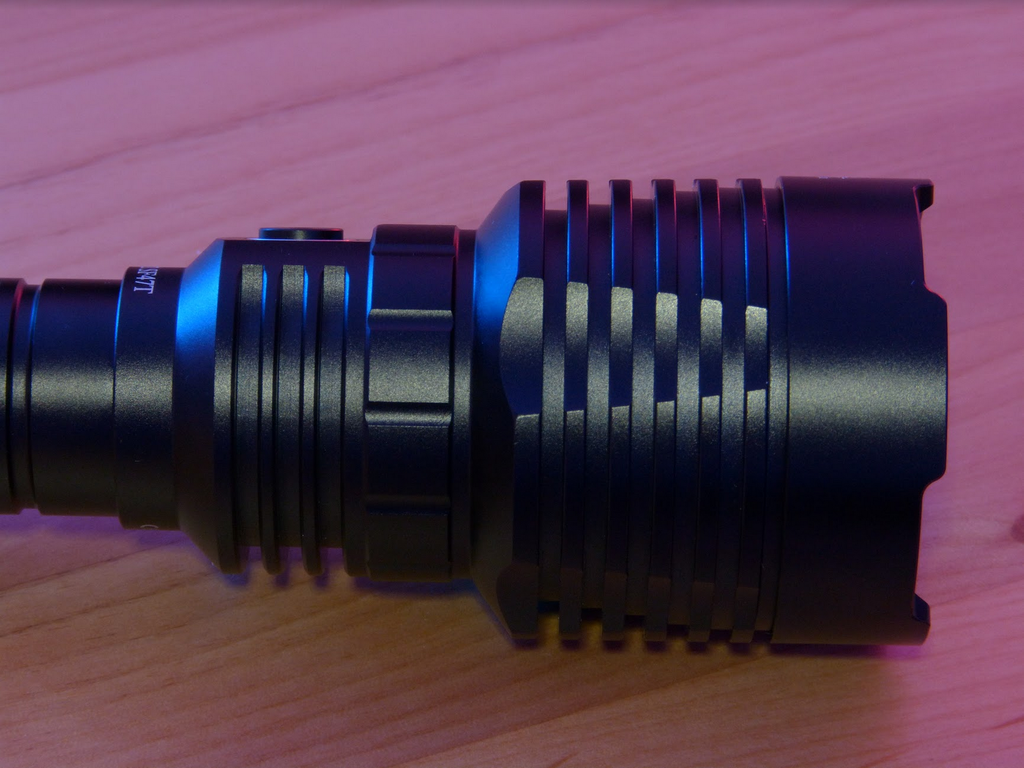
Besides these many positive observations I also noticed a lot of dust in the reflector of my sample. This does not seem to be a single incident since Jacob's review sample looked very much the same. Anway, it is probably an optical imperfection only since this amount of dust will not have any severe impact on the beam quality and peak distance.
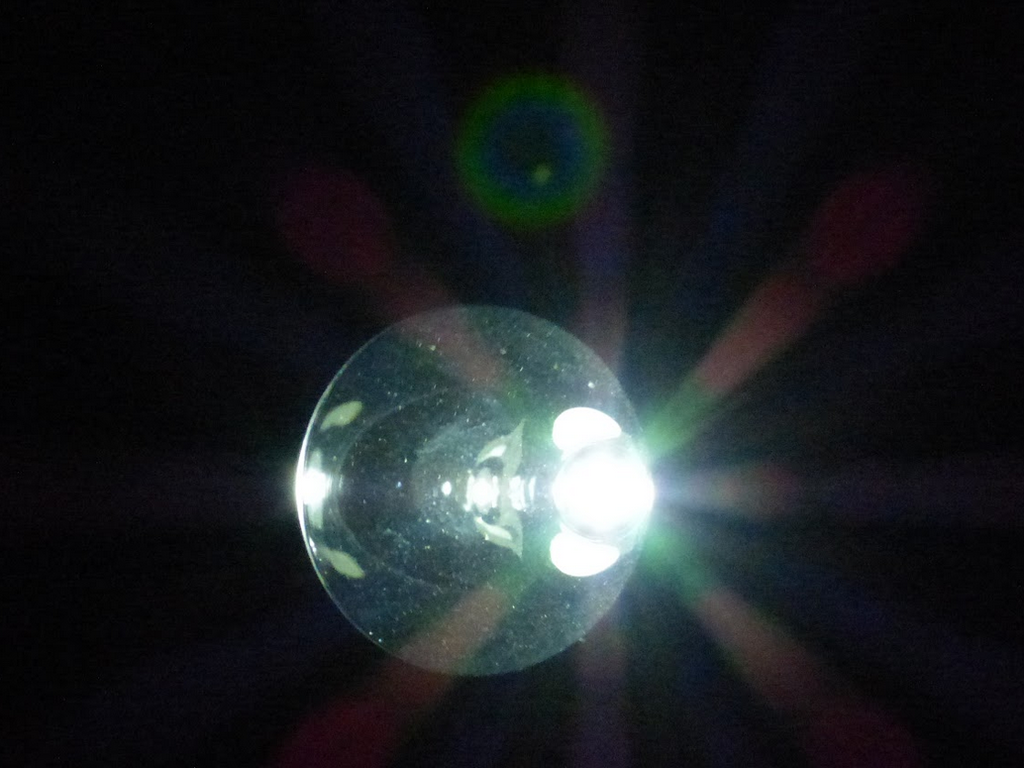
A closer look at the batteries
Along with the kit-version you get two 21700 5000mAh batteries that feature Sofirn's branding. This battery model is quite new in Sofirn flashlights and it is also being used by Wurkkos for their new TS30S powerhouse. Underneath the shrink wrap is a Lishen LR2170SD cell which has a protruding positive terminal and a recessed ring in the negative terminal. Its performance can be compared with Samsung's 50E/50G. Sofirn did a reasonable decision in choosing this battery for SF47T.
The most important specs:
Diameter: 21,7mm ± 0,2mm
Length: 70,9mm ± 0,2mm
Weight: 72g ± 4g
Nominal capacity: 5000mAh at 0.2C discharge current
Minimum voltage: 2.50V
Maximum voltage: 4.20V ± 0.03V
Standard charge current: 0.2C (1000mA)
Maximum charge current: 0.7C (3500mA)
Maximum discharge current: 2C (10000mA)
Impedance: ≤ 30mΩ
I measured an impedance of 10mΩ (1kHZ AC). The resting voltage was at 3.59V when I unboxed the light - very good. Both batteries differ about 100mAh in total capacity; voltages differ about 0.03V after discharging them in the flashlight. This is quite acceptable for operation in serial connection.
Remark: In serial connection, always use batteries as a pair and do not mix them with other batteries.
Since this battery comes with a protruding positive terminal, two of them can be driven in serial connection in a row. The positive terminal of the anterior battery was already slightly dented when I received the flashlight. Hence, there is a lot of spring tension. Many standard 21700 with flat top could have problems in making contact with each other. I recommend placing a (flat!) magnet as a bridge in between. But stay alerted about the high spring tension. I rather recommend buying the kit-version and use the batteries supplied with the light.

Size comparison
from left to right: Sofirn SP70, Sofirn SF47T, Sofirn C8F, Sofirn SC31 Pro, Wurkkos FC11 with 18350 tube

User Interface
Like many other tactical models with dual switch layout, SF47T comes with a classic UI. You can select from two mode groups called "Outdoor" and "Tactical". Both mode groups have dedicated stepped modes in common. Unlike other Sofirn flashlights like SP70 or C8F this one does not have any standby functionality, i.e. it is impossible to turn on/off the SF47T via side switch.
Group 1 - Outdoor (default)
| Light is... | Action for tail switch | Action for side switch | Result |
|---|---|---|---|
| OFF | Tap and hold | Momentary light (mode memory from L/M/H) | |
| Double-tap and hold | Momentary light (Turbo mode) | ||
| Press | Turn on with the selected brightness mode | ||
| 2. Press | 1. Hold | Moonlight mode, consecutive clicks to cycle L/M/H | |
| ON | Click | Cycle standard modes (L/M/H) | |
| Double-click | Turbo mode, single click to return to previous standard mode | ||
| Triple-click | Tactical strobe mode, consecutive double-clicks to cycle SOS/Beacon, single click to return to previous standard mode |
||
| Hold for 3 seconds | Change to Tactical group (light turns on in Turbo mode) |
Group 2 - Tactical
| Light is... | Action for tail switch | Action for side switch | Result |
|---|---|---|---|
| OFF | Tap and hold | Momentary light (Turbo mode) | |
| Double-tap and hold | Momentary light (Strobe mode) | ||
| Press | Turn on with the selected brightness mode | ||
| 2. Press | 1. Hold | Moonlight mode, consecutive clicks to cycle Low / Turbo | |
| ON | Click | Cycle standard modes (Turbo / Low) | |
| Double-click | Tactical strobe mode, consecutive double-clicks to cycle SOS/Beacon, single click to return to previous standard mode | ||
| Hold for 3 seconds | Change to Outdoor group (light turns on in Low mode) |
Runtime and thermal analysis
As mentioned before, the SF47T uses a buckdriver with constant current regulation. This kind of driver is the right choice for new generation LEDs like Osram's Boost HX since they efficiently convert the (too high) battery voltage down to a much lower LED voltage (Vf). A linear driver would burn the excess voltage into heat, subsequently leading to overheating driver components and finally forcing the light to step down. Those 7 amps were chosen wisely. However, 8 amps would have been the icing on the cake with regard to Convoy's L21A and the improved thermal design of Osram's Boost HX.
The flashlight maintains its full output for about 7 minutes before thermal regulation (ATR) is triggered at approx. 50°C surface temperature. Afterwards, the output is more or less stabilized at 70% of turbo mode (I guesstimate about 750-850lm) for almost exactly 2 hours. Meanwhile, its temperature is maintained at approx. 54°C. Looking at the fluctuations of the lux meter graph I can see that ATR is always triggered to keep the temperature at that level, resulting in brightness fluctuations of about 10%. The human eye however will not notice these small increases and decreases in brightness. In comparison to Sofirn's SP33 V3 with its mediocre and way too aggressive thermal regulation I can confirm that Sofirn's engineers did a great job improving their ATR algorithm.

Beamshots
I must confess that due to legal restrictions in conjunction with the pandemic I was unable to use my tripod and camera. Please excuse the modest image quality of my smartphone camera. Nevertheless, I hope you get an idea how the beam looks like. ;-)
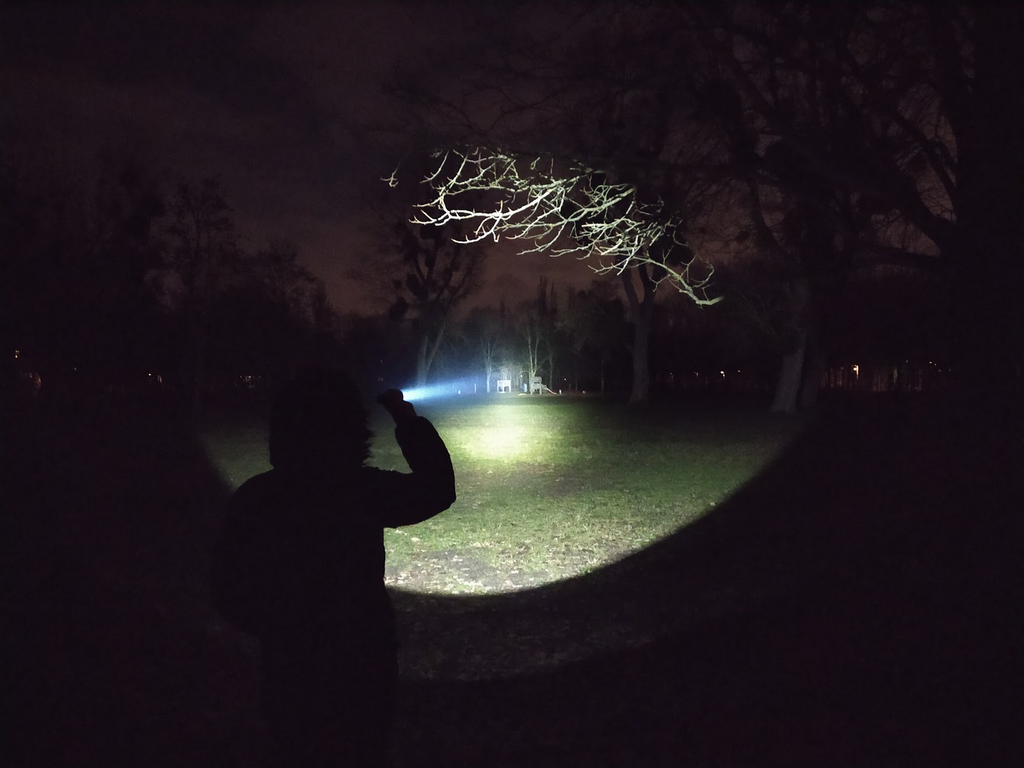
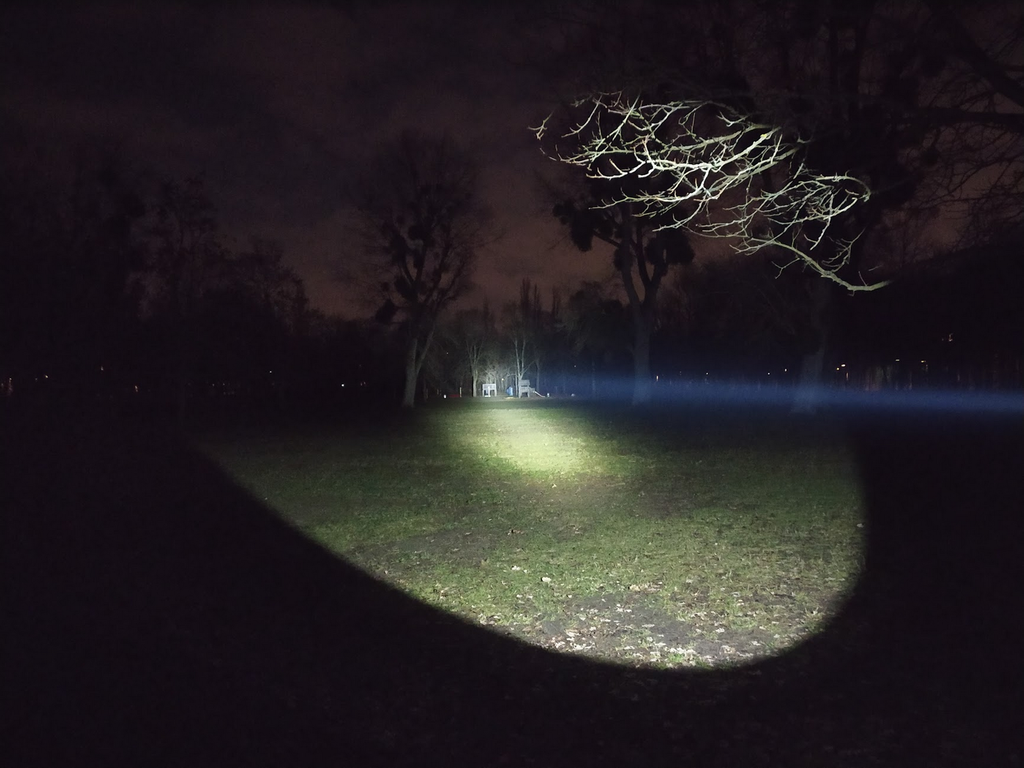

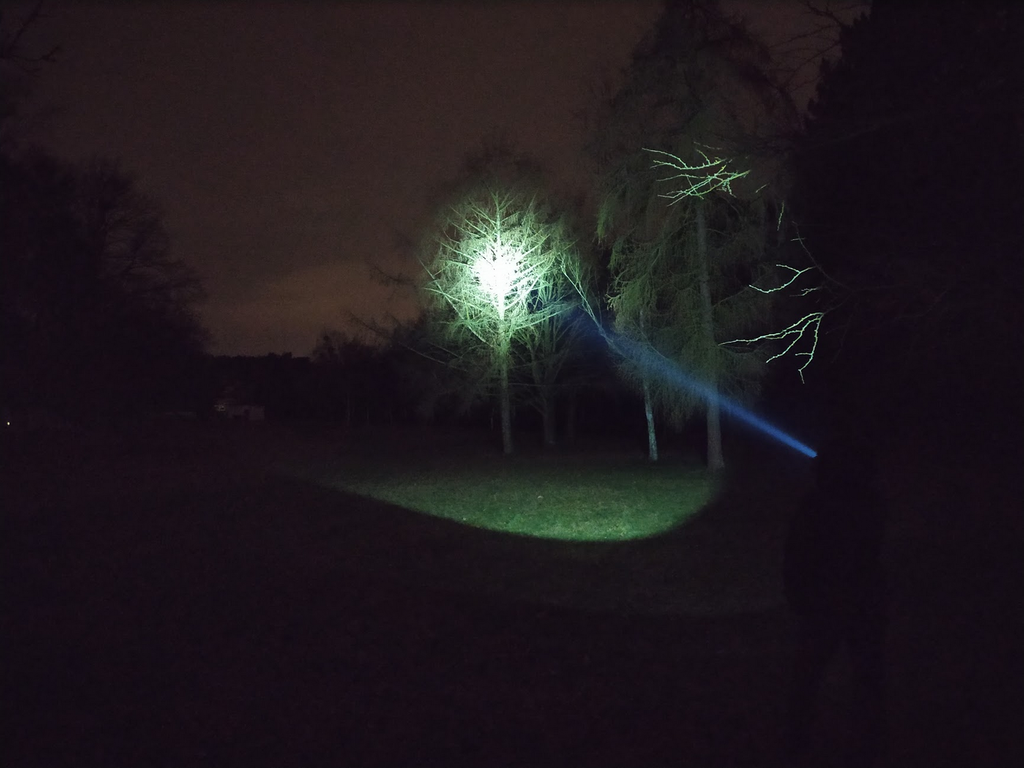

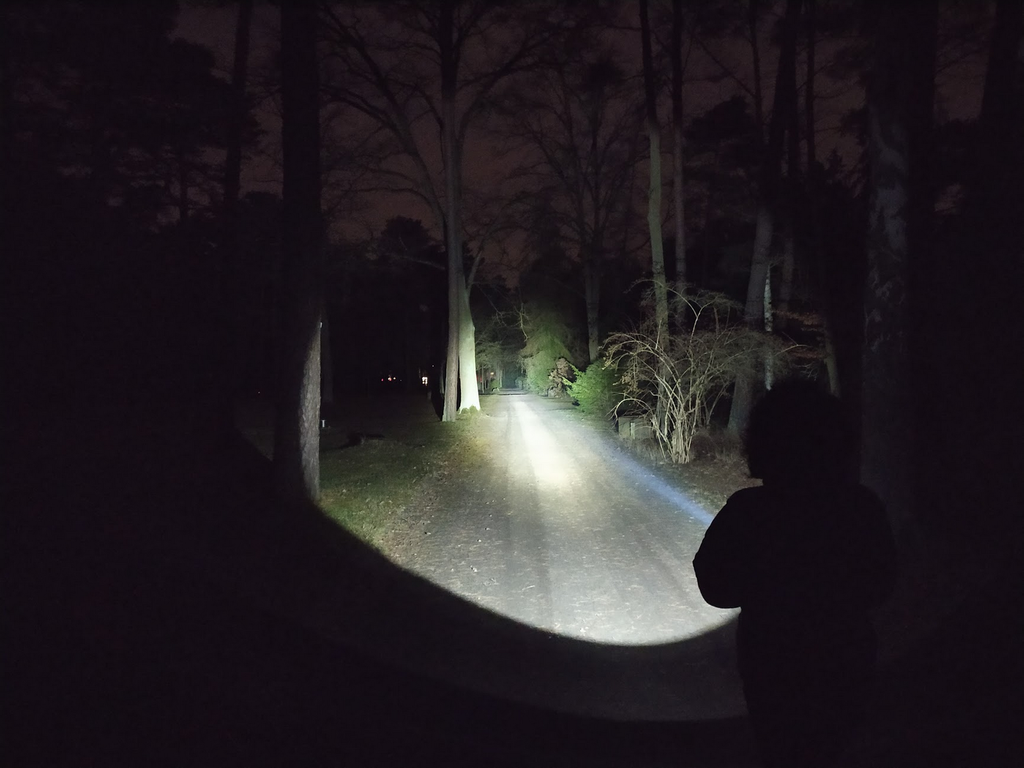
Conclusion & Verdict
With their new SF47T Sofirn accomplished to creating a compact, powerful and affordable midsize thrower. For a budget of 60 Euros you get a lot offered in return, especially if you choose to buy the kit-version. Its significantly improved thermal regulation and its efficient buckdriver are just two of many highlights of this model. Those who look for constant light output for up to 500m actual visual range with some useful spill around the hotspot will certainly be pleased with the SF47T. Workmanship is on a high level except for a few things that I would like to see improved.
I do see some potential for improvement in following aspects:
- Dust should not belong in a reflector even though it will not have that much impact on output and beam quality.
- The tube's knurling could be applied to its full length for better tactile handling, especially with regard to the side switch.
- Threads are dry but could be lubricated by factory already.
- Having the chance to turn on/off the light via side switch ("standby mode") would be convenient, at least in my humble opinion.